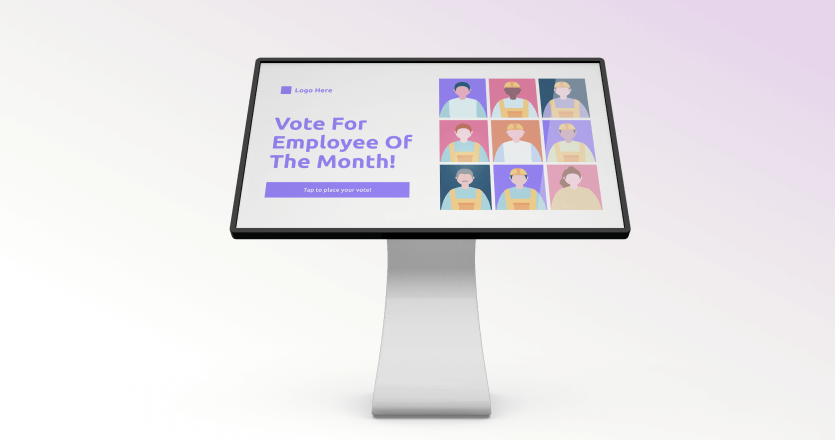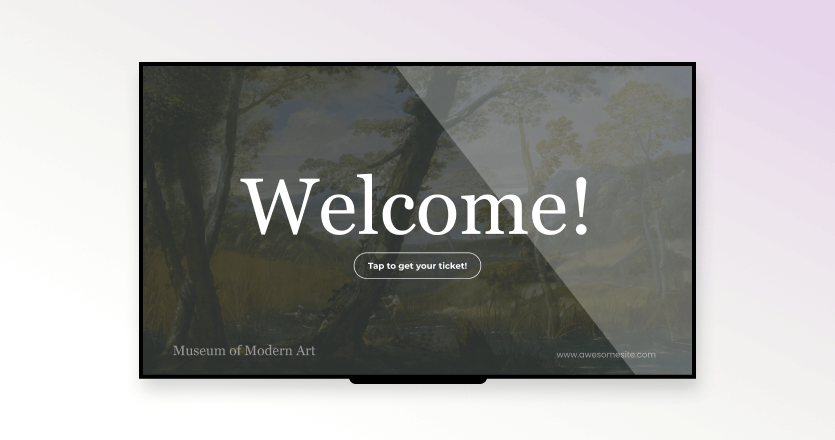Ask yourself this: Is your digital signage truly inclusive? Although digital displays have become a common means of modern communication, their effectiveness depends on their ability to reach out to all people regardless of their physical or cognitive abilities. In reality, many organizations overlook the importance of digital signage accessibility, missing out on an opportunity to connect with a broader audience and showcase their commitment to inclusivity.
This is not about compliance but leadership. Facility managers, digital content creators, and accessibility coordinators—you are the gatekeepers of an inclusive digital atmosphere. The decisions you make can empower a person or exclude them. It is more than just ticking another box- ensuring that your digital signage is accessible, embracing diversity as a mindset, and widening your message to everyone who walks past your screens.
According to the World Health Organization, over 1 billion people globally—about 15% of the world’s population—live with some form of disability, underscoring the importance of accessible communication tools like digital signage.
Let’s explore how you can lead the way in creating digital signage that not only complies with the law but also resonates with every individual who encounters it.
The Importance of accessibility in digital signage
Digital signage is everywhere—retail stores, healthcare facilities, and educational institutions, among other places. They play an important role in communication, advertisement, and information dissemination. However, their effectiveness begins to decrease if they don’t accommodate all users, including those with disabilities.
In fact, research shows that companies with strong accessibility practices are 28% more likely to outperform their peers in terms of overall financial performance.
In digital signage, accessibility is about far more than legal compliance; it involves ensuring that everyone can interact with the content regardless of ability. This means that even a visually impaired person should be able to read a menu at a restaurant, or someone who has hearing problems will need closed captions for video displays. Therefore, through your signage being accessible digitally, any messages you communicate reach the widest audience possible. Additionally, inclusive signs contribute positively towards your brand or organization as they signify to your consumers, customers, and guests that you appreciate diversity.
A survey by Accenture found that 62% of consumers prefer to buy from companies that stand for diversity and inclusion.

In a competitive market, this can be a significant differentiator, fostering customer loyalty and trust.
Legal requirements and standards
Legal standards are uncompromising when it comes to digital signage accessibility. Such issues are given special emphasis under the Americans with Disabilities Act (ADA), one of the most widely recognized pieces of legislation in the United States. This means that businesses and other organizations must ensure that their digital content complies with the ADA’s accessibility standards.
One of the key requirements of the ADA is that all content on digital signage must be perceivable, operable, understandable, and robust (often referred to as the POUR principles). This means that all content features, such as images or videos, must be easy to perceive, the navigation interface should be usable by all users, including those with various disabilities, the logic and flow of the content must be as straightforward as possible, and the content must be functional and usable across different technologies.
These principles are straightforward and closely aligned with the ADA’s guidelines. In addition to the ADA, the Web Content Accessibility Guidelines (WCAG) provide a broader framework for developers and digital content creators. This information can be especially helpful for developers working on web and web-based solutions.
If you are interested in designing inclusive digital signage, you can visit YouTube to watch the Yodeck design webinar.
Failure to comply with these legal requirements can result in significant penalties, not to mention the potential damage to your brand’s reputation. Therefore, it’s crucial to ensure that your digital signage meets all relevant accessibility standards.
Key elements of accessible digital signage
There are many things you need to consider in order to create accessible digital signage. Here are some key elements and practical tips and tricks to help you create inclusive signage:
First of all, the text on your digital signs must be large and clear enough to be easily read from a distance.
Secondly, if you want to include audio in your signage, it’s essential to provide text alternatives like captions. This ensures that people with hearing impairments will be able to access your content without struggle.
Additionally, images and videos should include descriptions or alt text too, so that people with visual impairments can understand the content through screen readers or other assistive technologies.
It is also necessary that people with various disabilities can easily navigate your content. This means that the user interface should be simple and intuitive. Ensure that interactive elements meet ADA requirements for touch screens and are accessible through keyboard navigation and screen readers.
Last but not least, ensure that any timed content, such as scrolling text or rotating images, allows enough time for users to read or interact with it. Avoid flashing or rapidly changing content, as this can trigger seizures in individuals with photosensitive epilepsy.

Practical tips and tricks for inclusive signage
Make your digital signage accessible and straightforward by just following the right approach. Here are some practical tips and tricks to help you create inclusive signage:
- ensure that you use high-contrast colors
- always provide captions or subtitles
- remember to conduct usability testing with individuals who have disabilities
- consider working with digital accessibility compliance experts
- make it a habit to stay informed about the latest guidelines and best practices
Discover more insights in our blog, where you’ll find in-depth articles on digital signage best practices and a wide range of other topics.
Four innovative solutions and technologies
It can be said that the development of technologies does simplify the process of creating accessible digital signage. Below are some creative ideas that you may wish to consider in order to improve the usability of your signs:
- Voice-activated signage: Voice recognition is one method by which users can control Digital Signage through voice commands. This feature should be very helpful to people with mobility impairments who may have difficulties using touch screens.
- Haptic feedback: This capability of responding back enables the users interacting with the digital signage to receive Tactile feedback, which is important for people with visual impairments.
- AI-powered content personalization: AI can personalize content based on the user’s needs. For example, it can detect when a person with a hearing impairment is interacting with the signage and automatically enable captions.
- Beacon technology: Beacons can send accessible content directly to the user’s smartphone, providing a different approach to interacting with the signage.
Accessible signage, broader impact
Ensuring that your digital signage is accessible is not just about compliance; it’s about creating an inclusive environment for everyone who interacts with your content. By understanding the ADA signage requirements, focusing on key accessible signage guidelines, and using innovative solutions, you can make your signage more inclusive and impactful.
Remember, accessible digital signage not only expands your audience but also boosts your brand’s commitment to inclusivity. Take the first step with Yodeck.
